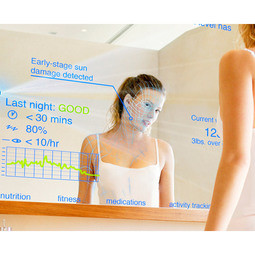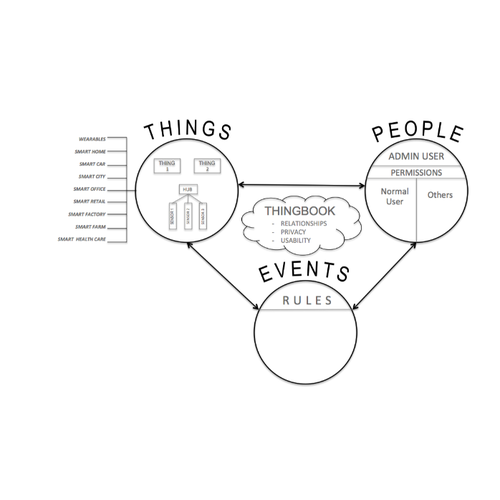
Published on 08/01/2016 | Market Sizing
Three core components make up the IoT ecosystem: Things, People and Events. A simple example is a smart thermostat (Thing), operated by the home owner (People), which activates home heating when the temperature drops below a certain point (Event). IoT is essentially about the interaction and relationships between, and within, these three core components.
The IoT ecosystem will evolve far beyond a simple smart thermostat example and bring about real and meaningful enhancements to the quality of our lives, enabling us to accomplish what we have never been able to do before.
Currently, smart devices are cumbersome to setup. For example, a user wanting say, some smart bulbs, smart smoke alarms, and smart power adapters to control appliances – each smart device requires its own proprietary setup to establish connectivity, each requires its own app to control, and its own logon credentials to access. This is cumbersome and will change. Tap-&-Go technology will extend to IoT device setup. If I purchase a new home refrigerator for example, simply by tapping my mobile phone on the appliance will setup connectivity and establish me as the fridge Admin user.
IoT will evolve to enable users to control their own data and manage privacy. As fridge Admin user, I will be able to set permissions and establish rules. For example, I may receive a message from my fridge asking to allow connection with the manufacturer for warranty and maintenance purposes. I will be able to add my wife as a fridge user, and give her permission to see data and manage settings. Now my wife can also see how much milk and other provisions we currently have. I can provide the supermarket permission to access the milk data, and set a rule when new milk will be automatically delivered. I may even allow some friends to see how much beer we have on ice! The key is for the user to manage privacy by changing permissions at any time.
The IoT ecosystem will evolve to enable easy setup, control data flow, and manage relationships between Things, People and Events. A common platform is needed to enable this. Just as today, we use Facebook for people relationships, IoT will require a “ThingBook” to manage Things, People and Events, to set rules and permissions. As Facebook links people and organisations, and organises people into groups, “ThingBook” will enable us to set relationships and organise Things, People and Events into groups.

The examples provided above are very simple applications of IoT technology. In time, matters will get far more complex.
Things themselves, vary in complexity – from simple sensors connecting to a hub, to smart devices, smart appliances, smart cars, etc. Things are grouped into environments such as the smart home, smart office, smart city, smart factory and smart farm, and also grouped according to purpose such as wearables, smart health care or smart military (see diagram above). Complexity will enable inter-group relationships between things, such as clothes communicating with the washing machine, food packaging communicating with the oven, or the alarm clock obtaining traffic conditions from street lamps.
An individual’s “ThingBook” will be used as a common easy-to-use interface, to manage relationships, permissions, rules, and privacy of data.
An example of more complex IoT relationships is a police patrol car. The police controller (Admin user) can allow a particular police officer (normal user) to drive the vehicle. This establishes a relationship between the Person and the Thing. While on patrol, if a nearby emergency incident is reported, the police officer responds to that emergency and with one click sets up a short-term relationship between the police officer, the patrol car and the traffic lights between their present location and the emergency (relationship with Things, People and Events). This could trigger traffic lights to change as the patrol car approaches, enabling it to arrive at the emergency earlier. Due to appropriate rules, permissions, and things in different environments, complex relationships between Things, People and Events can bring about significant changes to dramatically enhance our lives.
The extent of complex relationships such as the police patrol car example, are limited only by our imagination…
Many thanks to IoT-expert Lee Noonan for collaborating on this article.